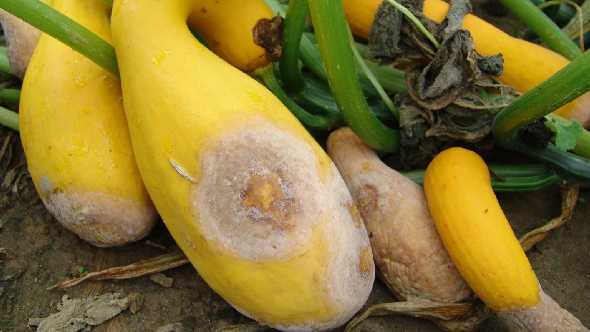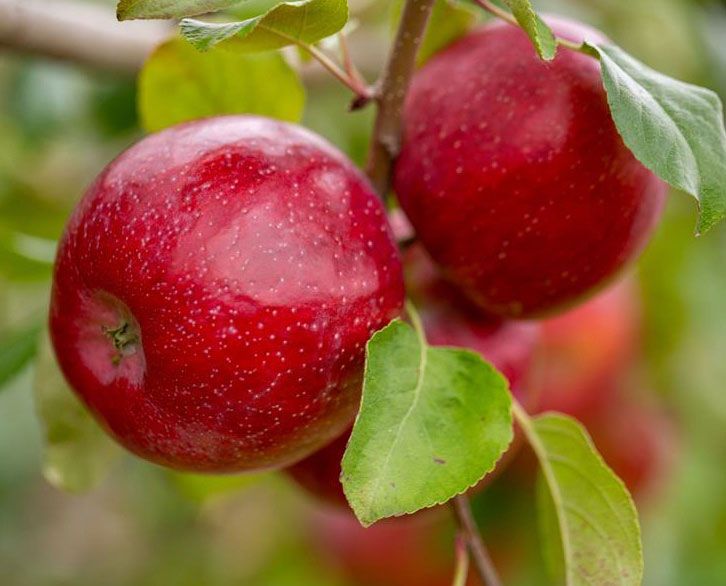Fight Phytophthora Blight Of Cucurbits
Crops Affected
The host range is wide and all cucurbits are susceptible; as are pepper, tomato, eggplant, papaya, and a variety of other crops.

Photo by Gerald Holmes
Identification
Phytophthora blight is one of the most destructive diseases of cucurbits, and under certain conditions, it can result in total crop loss. The disease caused by the pathogen Phytophthora capsici is a sporadic problem in summer squash and watermelon in most vegetable production areas of the state, especially in Southeast, Southwest, and West Central Florida.
Phytophthora symptoms include stunting, crown rot, and fruit rot depending on the cucurbit species and the time of infection. The crown rot phase is the most destructive. Dark-green, water-soaked lesions form on the crown or vines, girdling them and causing the entire plant to turn yellow or brown and die.
Fruit infections begin as large water-soaked lesions. Under humid conditions, a thin layer of white spores may develop on the surface of the fruit. In watermelon, the lesions frequently are circular in shape. While in cucumbers, the spores often cover the entire fruit.
Survival And Spread
P. capsici is an oomycete or water mold. It thrives under wet soil conditions caused by excessive rainfall, poor drainage, or soil compaction. Ideal temperatures for infection are in the 75°F to 85°F range.
Phytophthora can survive as thick walled, resistant spores (oospores) in the soil and as mycelium in infected plant tissues. Once introduced into a field, the disease can survive for more than two years in moist soil in the absence of host plants.
Soil moisture conditions are important for disease initiation. Sporangia form when soil moisture reaches field capacity for an extended period and can release zoospores when soil is saturated for as little as five to six hours.
Zoospores are motile and are able to swim in saturated soils. They are capable of directional movement toward a host plant based on chemical attraction. Phytophthora spores have been found in drainage ponds and can spread through irrigation water from surface water sources.
Disease development in a crop can occur rapidly because sporangia are produced abundantly on affected fruit and they are dispersed under a wider range of conditions than zoospores.
Management Methods
Avoid planting in poorly drained fields or fields with a history of the disease. Where feasible, practice long crop rotation to reduce the amount of innoculum present in the soil. Plant on raised beds and provide adequate drainage. Avoid over-irrigating.
Application of fungicides may reduce disease development and spread if used in combination with cultural practices such as crop rotation and raised beds. Application at planting and multiple applications after planting may be required.
Newer products registered for phytophthora in cucurbits are specific for the control of oomycetes and include Presidio (fluopicolide, Valent USA), Ranman (cyzofamid, FMC Corp.), Revus (mandipropamid, Syngenta) and Zampro (ametoctradin/dimethomorph, BASF). Apply fungicides before disease symptoms appear, when the risk of infection is high based on local soil and weather conditions.
Consult UF/IFAS recommendations for currently labeled products for Phytophthora control in cucurbits.










